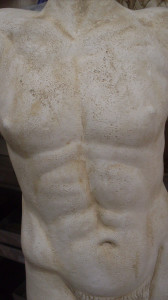( For the texts and pictures books, publications, guidelines for example in awmf.org and contributions of colleagues were consulted.)
 Prevention in Sports
Prevention in Sports
A Let the feet dry out in the air and apply regularly antimicrobial creams, powder, or paste. After a relaxing footbath, the softened cornea should be planed off and the feet can be massaged.
B To keep the gland ducts free from sweat and dust, regular showeres with disinfectant, alkali-free, moisturizing agents are recommended.
C. Until the healing of infections the physical activity should be the reduced.
D showers and care
For the skin not too long showering is important. For athletes before sports, gels, water-based, containing little fat, are the most suitable. The problem with fatty creams is that they can lie like a film over the skin. If you do sports and begin to sweat, it can feel uncomfortable and cause skin irritations. Especially people with dry skin or eczema suffer. After sports alkali-free, moisturizing, pH-neutral cremes should be used. Then, it is best to use a product that binds moisture to protect the skin from drying out. Such products contain urea or glycerol. After sports creams or ointments can be applied as often and as much needed.
For sensitive skin, it can help to take care of the the skin already about an hour before swimming with a moisturizing gel, and certainly again after exercise to prevent further drying. If that’s not enough, it may be better to look for a bath-pool, where the tanks are cleaned with ozone instead of chlorine.
E outdoor activities
It is important to protect the skin accordingly. All “sun terraces” forehead, ears, nose, lips, eyelids and chin should be protected with a high protection factor. In the summer but also in winter in the climax in mountaineering, skiing, the air in height, suitable sports clothing with UV radiation protection are important. The higher you climb, the more UV radiation can impinge on the skin. It is said that the radiation exposure per 1,000 meters of altitude increases by 20 percent.
